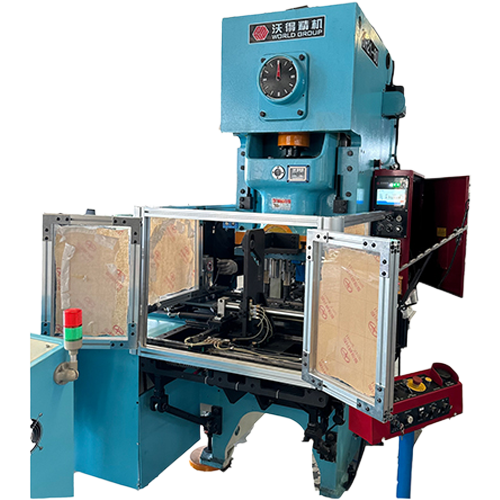Development trends of can sealing machine equipment at home and abroad
I. Trends in the development of filling and sealing equipment abroad
The filling equipment is moving towards high speed, versatility and high precision. Currently, some filling lines can meet different needs such as glass bottles and plastic containers (polyester bottles), carbonated and non-carbonated beverages, hot filling and cold filling, and can adapt to various usage environments.
The filling valve of this non-carbonated beverage filling machine has 50 to 100 nozzles, the filling speed can reach 1500 cans per minute, and the rotation speed of the filling machine tank body is 20 to 25 revolutions per minute, which is twice the original speed. It can be used for hot filling of various beverages, such as tea beverages, coffee beverages, soy milk and juice beverages, and does not require secondary sterilization of imported hot filled beverages after sealing.
The filling technology of room temperature carbonated beverages has been in the works for more than 20 years. Room temperature carbonation can reduce the cost of beverages and is beneficial to environmental protection.
This nitrogen filling system for non-carbonated beverages injects liquid nitrogen inert gas into tilted aluminum cans or plastic bottles by pressurizing or dripping liquid nitrogen, thereby enabling easy-pull two-piece aluminum cans and plastic bottles to be used to store non-carbonated beverages, such as juice beverages. At the same time, it protects the beverage contents and reduces the loss of nutrients.
Currently, pet bottled tea beverages are usually hot-filled. In order to reduce the filling temperature, enhance the flavor of the tea beverage, and ensure the hygiene and safety of the product, a sterile packaging machine has been developed that uses pet resin molding, sterilizes in 130℃ high-pressure steam, and performs special filling. Aseptic packaging technology for two-piece thin-walled cans for iced coffee and other low-acid beverages is under development to achieve sterile packaging of thin-walled cans.
Two. Domestic filling production line
Beverage filling equipment in our country has basically been developed based on the introduction of equipment and technology. In the 1980s, more than 300 beverage filling lines were introduced, including more than 500 beer filling lines. Imported filling production lines are mainly divided into the following categories:
(1) Glass bottle beverage filling production line
In the 1980s, 116 glass bottle beverage filling lines were introduced, mainly for filling carbonated beverages. More than 80 of these were imported from Eastern European countries through accounts, including 35 from Romania, 30 from the German Republic, and 8 from Poland and the Czech Republic. Twenty-three filling lines introduced via foreign exchange came from West Germany, three from Japan, six from the United States and one from Italy. The main equipment of the production line includes bottle unloader, bottle cleaning machine, filling machine, capping machine, labeling machine, inkjet printer, gas-water mixer, box machine, etc. In-line testing equipment includes vacuum detectors, liquid level detectors, and filling capacity detectors of 150, 200, 300 to 400 bottles per minute.
(2) Beverage filling production line
During the “8th Five-Year Plan” period, my country introduced 15 canned beverage filling lines and 14 canned beer filling lines. The main equipment comes from Germany and the United States, including can openers, cleaning machines, filling machines, can sealers, heating machines, palletizers and other mixing equipment, inkjet printers, film shrinkers, liquid level detectors, etc. The filling rate is 150,300,400,500 cans per minute, with a high of 575 cans per minute.
(3) Polyester bottle filling production line
A total of 6 to 7 polyester bottle beverage filling lines have been introduced, including unpacking machines, unloaders, bottle washers, filling machines, capping machines, bottle heaters and case packers. Filling capacity is 400 to 500 vials per minute for 250 ml bottles and 50 to 280 vials per minute for 1250 ml bottles.
III. Continuously improve the level and comprehensive capabilities of soft drink production equipment
After introduction, digestion and absorption, the level of beverage production equipment in China has greatly improved. In particular, filling lines with a production capacity of 150 bottles (cans) per minute can basically be supplied in sets. Currently, Nanjing Light Industry Machinery Factory, Hefei Light Industry Machinery Factory and Guangdong Light Industry Machinery Factory are able to provide beverage or beer filling production lines with 600 glass bottles per minute and 600 cans per minute. The main equipment includes semi-automatic unpacking machines, tank cleaning machines (bottle cleaning machines), filling machines, canning machines (capping machines, capping machines), heating machines (bottle heating machines), mixing machines, carton packaging machines and sterilizing machines. The filling capacity is as follows:
Number of filling machine/sealing machine heads: 18/4 30/6 40/6 60/8
Filling speed: Can (bottle) /min: 150 300 500 60
Recommended Products


 EN
EN
 中文简体
中文简体 English
English













